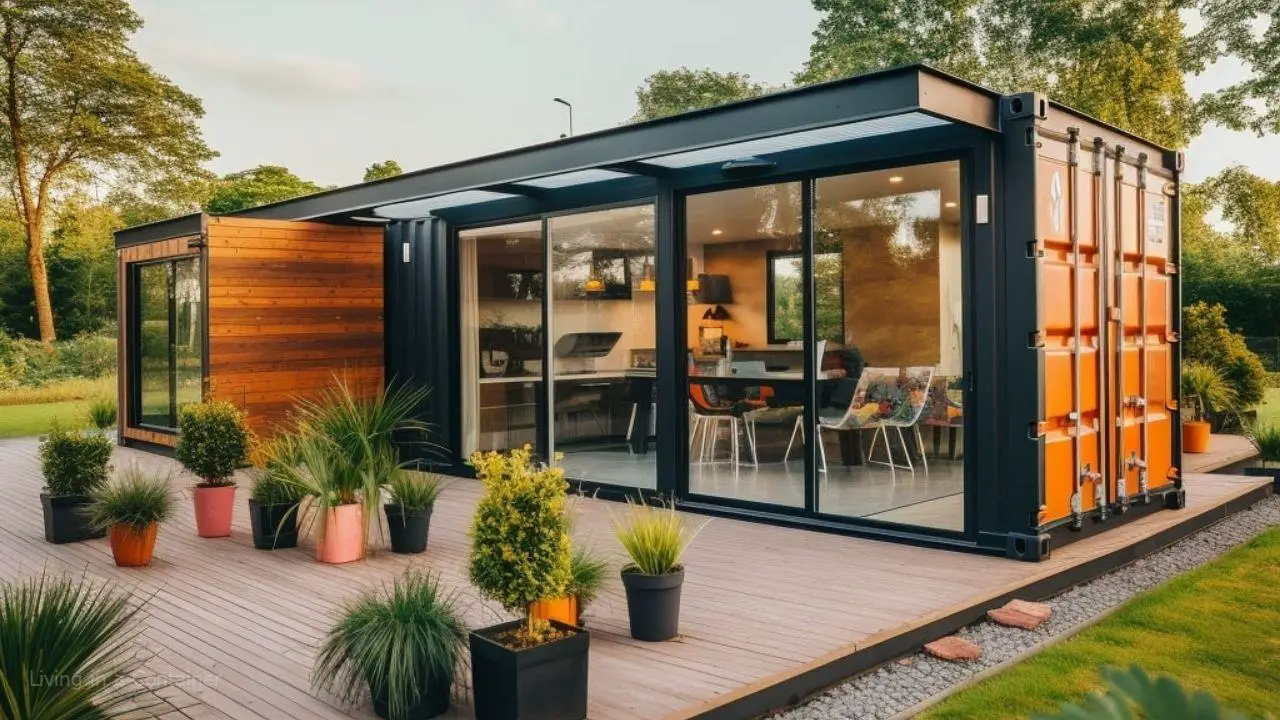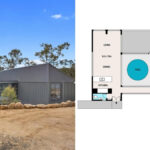Living large in small spaces has become a global trend, and nowhere is this more evident than in the emerging popularity of container homes.
With their industrial charm and minimalist appeal, container homes offer a unique take on urban living. Specially, in a city as expansive and diverse as Los Angeles, these unconventional homes represent an innovative solution to housing challenges.
This discourse delves into the intriguing world of container homes, exploring everything from their construction and design to the legal and financial implications in the context of the City of Angels.
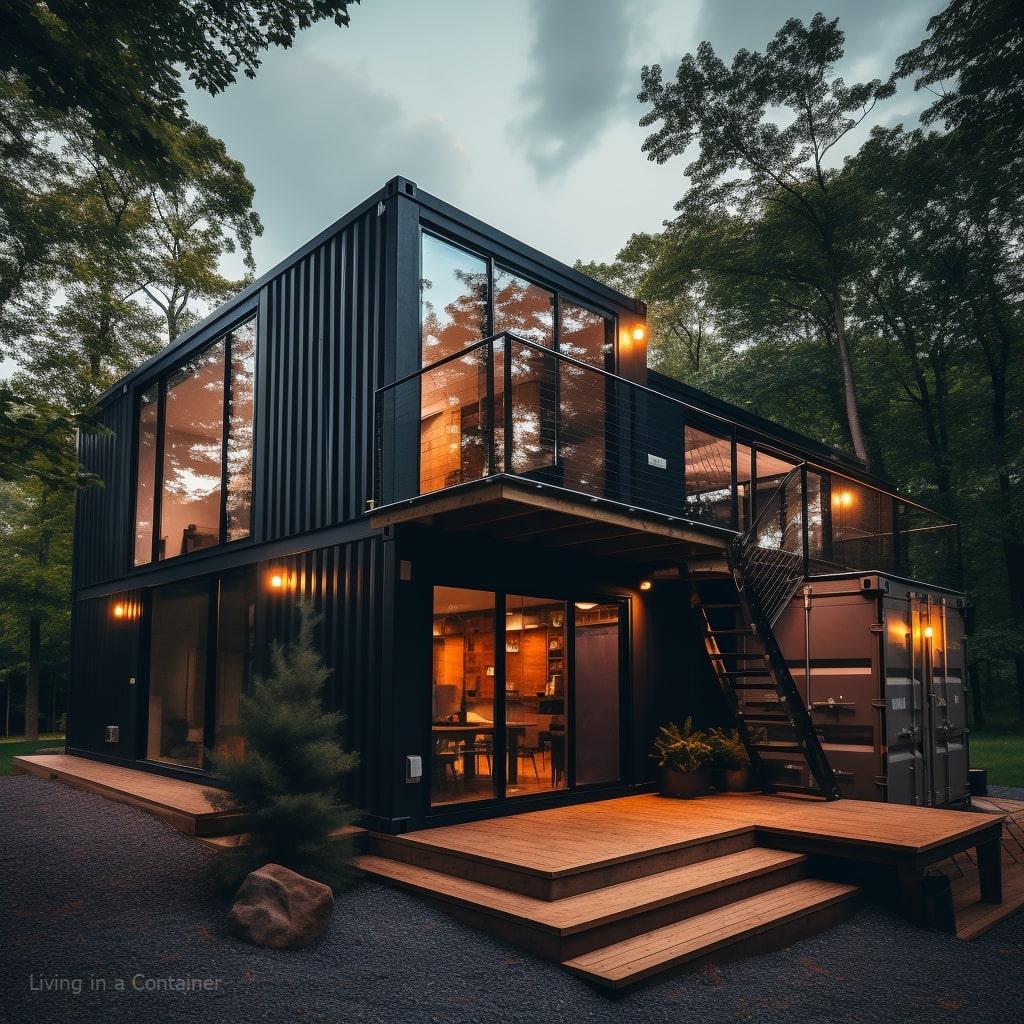
Understanding Container Homes
Understanding Container Homes
Container homes are increasingly becoming a popular trend in the housing industry due to their affordability, environmental efficiency, and versatility in design.
These unique residences are made from shipping containers, which are durable, structurally sound, and designed to withstand harsh weather conditions.
Container homes can be constructed using various types of containers, including standard dry vans typically used in transoceanic shipping or refrigerated models apt for insulation purposes.
One of the essential steps in turning a shipping container into a home involves cutting windows and doors, which requires specialized equipment and skills to maintain structural integrity.
Construction And Renovations
Once the space has been cut out, interior renovations can commence. This often includes installing insulation, wiring and plumbing, drywall, and flooring.
Each container’s unique design can dictate the specific renovations required, with some homes featuring an open floor plan, while others include multiple rooms or floors.
Insulation is critical in container homes, especially in Los Angeles, where temperatures can vary widely.
Generally, spray foam insulation is used as it offers superior insulation quality and acts as a vapor barrier. However, it’s more expensive than traditional insulation materials.
Other insulation options include panel insulation and blanket insulation, both of which can be installed with greater ease than spray foam but might not offer the same level of cooling and heating efficiency.
Durability Of Container Homes
Due to their origins in transoceanic shipping, these steel structures are incredibly resilient. They are designed to resist harsh elements, including powerful winds and heavy loads, making them superbly durable for residential purposes.
Corrosion is one potential issue but can generally be prevented with regular maintenance and the use of specialized coatings.
An Emerging Trend: Container Homes in Los Angeles
As the populous city of Los Angeles grapples with expensive housing costs, container homes emerge as an innovative and appealing solution.
Indeed, they have an edge due to their affordable price range and reduced construction times compared to traditional homes.
This shift has led to an increment in the adoption of container homes across the city, with many homes, shopping complexes as well as pop-up restaurants now being made out of these repurposed shipping containers.
The environmental benefits of these container homes significantly fuel this growing trend.
Constructing houses from recycled containers lowers the need for new material like cement and bricks, thereby cut down on CO2 emissions. This makes it easy for Angelenos to choose a more sustainable lifestyle and decrease their carbon emissions.
Overall, it’s fair to say that container homes in Los Angeles are a compelling alternative to conventional homes, offering potential benefits ranging from cost effectiveness, to the speed of construction, environmental impact, and even unique architectural design possibilities.
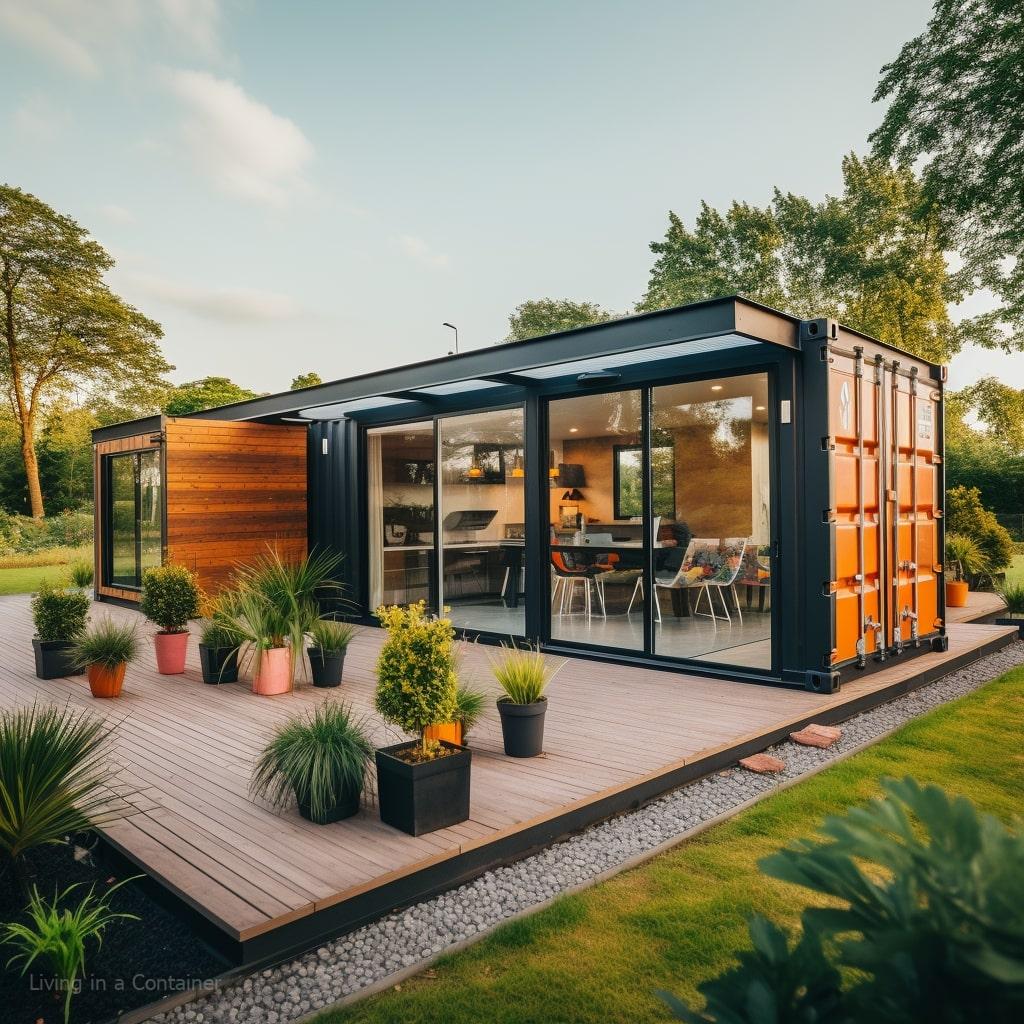
The Legality and Regulations of Container Homes in Los Angeles
Understanding the Dynamics of Container Homes in Los Angeles
In various areas of Los Angeles city and its suburbs, container homes are fast becoming a favoured option due to their lower cost, enhanced efficiency, and eco-friendly attributes.
These off-beat homes, typically made from repurposed shipping containers challenge traditional concepts about housing, offering a unique and modern answer to the area’s housing quandary.
However, constructing a container home in the city involves understanding and navigating through a complex maze of regulations and obtaining necessary permits.
Understanding Zoning Laws for Container Homes in Los Angeles
Zoning laws lay the groundwork for building any structure, including shipping container homes. These laws dictate where certain types of properties can be constructed.
Los Angeles City and County have distinct zoning regulations. For instance, residential zones like R1 allow single-family homes, while R3 and R4 permit multifamily dwellings and apartments.
You must verify that your property’s zoning classification allows for a container home prior to planning its construction.
It’s also crucial to remember that Los Angeles has specific restrictions and requirements for accessory dwelling units (ADUs), under which many container homes fall.
In recent years, the laws have loosened to encourage the development of ADUs to cope with the city’s housing shortage.
Necessary Construction Permits for Container Homes
The process of obtaining necessary permits to construct a container home in Los Angeles can often be complicated.
Builders must get several permits from different departments, including Building and Safety, City Planning, and Public Works. These permits cover different facets of construction including foundations, plumbing, electrical systems, and septic.
Los Angeles City also requires that builders obtain a Site Plan along with Construction plans, which include mechanical, electrical, and plumbing designs.
Safety and Environmental Standards
The City and County of Los Angeles enforce a set of stringent safety and environmental standards that container homes must meet. These include guidelines for structural stability, electrical installations, insulation, ventilation, firefighting accessibility, and means of egress.
Particularly, seismic design requirements have considerable influence over container home construction in Los Angeles due to the area’s susceptibility to earthquakes. Compliance with the Los Angeles Green Building Code, which encourages energy efficiency and sustainability, is also essential.
Assessment of Containers for Housing Purposes
Not every shipping container can be transformed into a home. The city authorities assess each container to ensure its structural integrity and safety.
An approved Structural Engineer must assess the container before it can be used for housing construction. After construction, the container home must pass a series of inspections to confirm its compliance with safety guidelines.
Container Homes in Los Angeles: An Overview
Building a container home in Los Angeles is a process that requires keen navigation through various zoning laws, securing appropriate permits, and ensuring adherence to the city’s rigorous safety and environmental regulations.
Despite these challenges, the innovative appeal of a container home has gained recognition among builders and homeowners as an exceptional alternative to typical housing choices.
For a seamless process, it is recommended to collaborate with a trusted building contractor familiar with Los Angeles’ building rules and regulations.
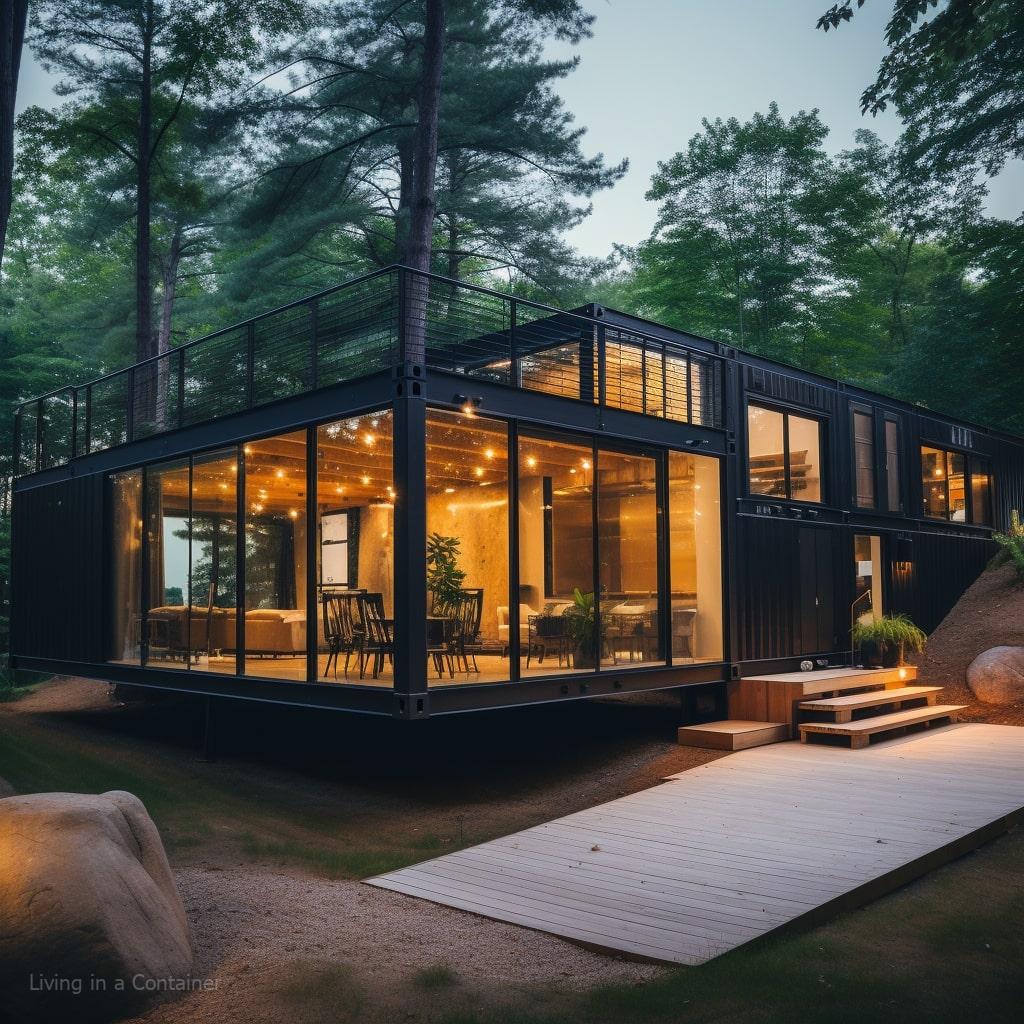
Pros and Cons of Container Homes
The Pros and Cons of Owning a Container Home in Los Angeles
Container homes have multiple attractive features, with affordability topping the list. Building these homes can significantly undercut the expenses typically linked to constructing traditional homes.
Bearing in mind that the median home price in Los Angeles stands over a staggering $800,000, the total costs tied to setting up a container home – container purchase, modifications, and interior fitting – typically extend from $20,000 to $50,000. This disparity underscores the cost-saving potential of container homes.
An added dimension to these homes’ appeal lies in their sustainability. The tendency to repurpose already existing containers means they champion the essence of upcycling, thus minimizing the environmental effects common with new home constructions.
This aligns well with LA’s surge towards sustainable and eco-conscious living, making container homes an engaging option for eco-minded residents.
A perk unique to container homes is their mobility. They offer an element of flexibility unmatched by traditional homes, meaning they can be transported with relative ease, which is a significant advantage for those seeking a versatile living situation.
Design flexibility is yet another container homes’ bonus. The potential for customizing to various shapes, sizes, and styles is almost endless.
Given LA’s reputation for creativity and individualism, this could be a splendid enticement for future homeowners.
However, it’s important to stay subjective and consider some potential drawbacks of container homes. One such concern is health-related, especially where containers previously treated with robust chemicals are used. These chemicals could pose potential risks if not correctly handled.
The constraints of space in container homes could be another downside to consider. Even when using multiple containers, the space may still fall short compared to regular homes – a potential difficulty for larger families or those requiring ample space.
Insulation is another vital aspect to keep in mind. The metallic composition of shipping containers makes them succeptible to temperature variations – extremely hot in LA summers and cold in winters.
This might necessitate higher utility expenses for heating and cooling, unless proper insulation is installed, which potentially could inflate the overall construction costs.
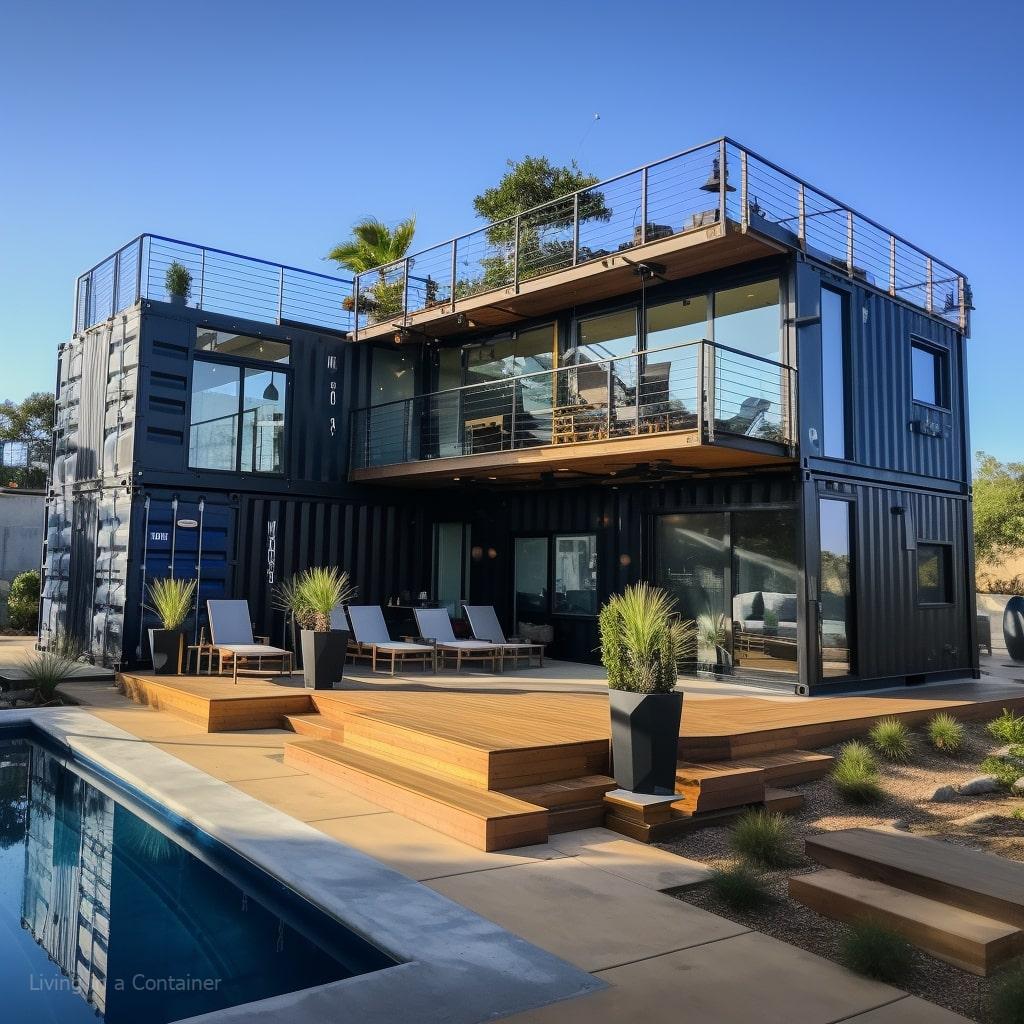
Cost Analysis of Building and Owning a Container Home in Los Angeles
Understanding the Costs of Constructing a Container Home in Los Angeles
Upon a preliminary glance, container homes seem to be a more affordable option in comparison to traditional homes.
The costs can range from as low as $10,000 to upwards of $300,000, depending on the design and facilities, although an average tiny container home starts around the $40,000 mark.
Beyond purchasing a shipping container at $1,500 to $3,000, costs can mount up from modifying the container, which includes insulation, fitting of doors and windows, and the installation of plumbing and electrical systems. These modifications are likely to add an additional $20,000 to $50,000 to your initial budget.
It’s essential to note that while the container home itself may seem affordable, the high property prices in Los Angeles could significantly raise the overall cost of your building project.
Comparison With Traditional Homes
Comparing these figures to the cost of building a traditional home in Los Angeles, it’s clear the container homes are typically cheaper.
However, remember that costs can rise quickly when considering custom designs or more elaborate amenities.
Remember, the median home price in Los Angeles ranges from $600,000 to $800,000, which, to many, might render alternative living arrangements, like container homes, an appealing choice.
Maintenance Cost
Maintenance costs for container homes can vary, but are typically lower than traditional homes. The original container structure is made of corten steel, which is designed to withstand harsh weather conditions – this can significantly reduce the need for routine maintenance that is commonly associated with traditional wooden structures.
However, plumbing, electrical systems and insulation will still require regular checks, which might cost around $1,000-$1,500 annually.
The Pros and Cons of Container Homes in Los Angeles
Considering the skyrocketing prices of traditional homes, the initial investment cost for container homes in Los Angeles might seem comparatively wallet-friendly.
However, one must be mindful of various other factors such as market demand and appreciation of property value. Given that container homes are a relatively recent concept, they might not gain in value as robustly as conventional homes do over time.
Additionally, legal and zoning issues pertaining to container homes pose an additional challenge for prospective buyers. Obtaining permits to construct a container home in Los Angeles can quickly become a lengthy and complex task due to the stringent building codes in place, thus adding more to the overall expenditure.
Moreover, insurance premiums for container homes can be higher as insurance companies view them as a new and uncertain risk. As such, potential homeowners ought to take this into account while ascertaining the cost-effectiveness of a container home.
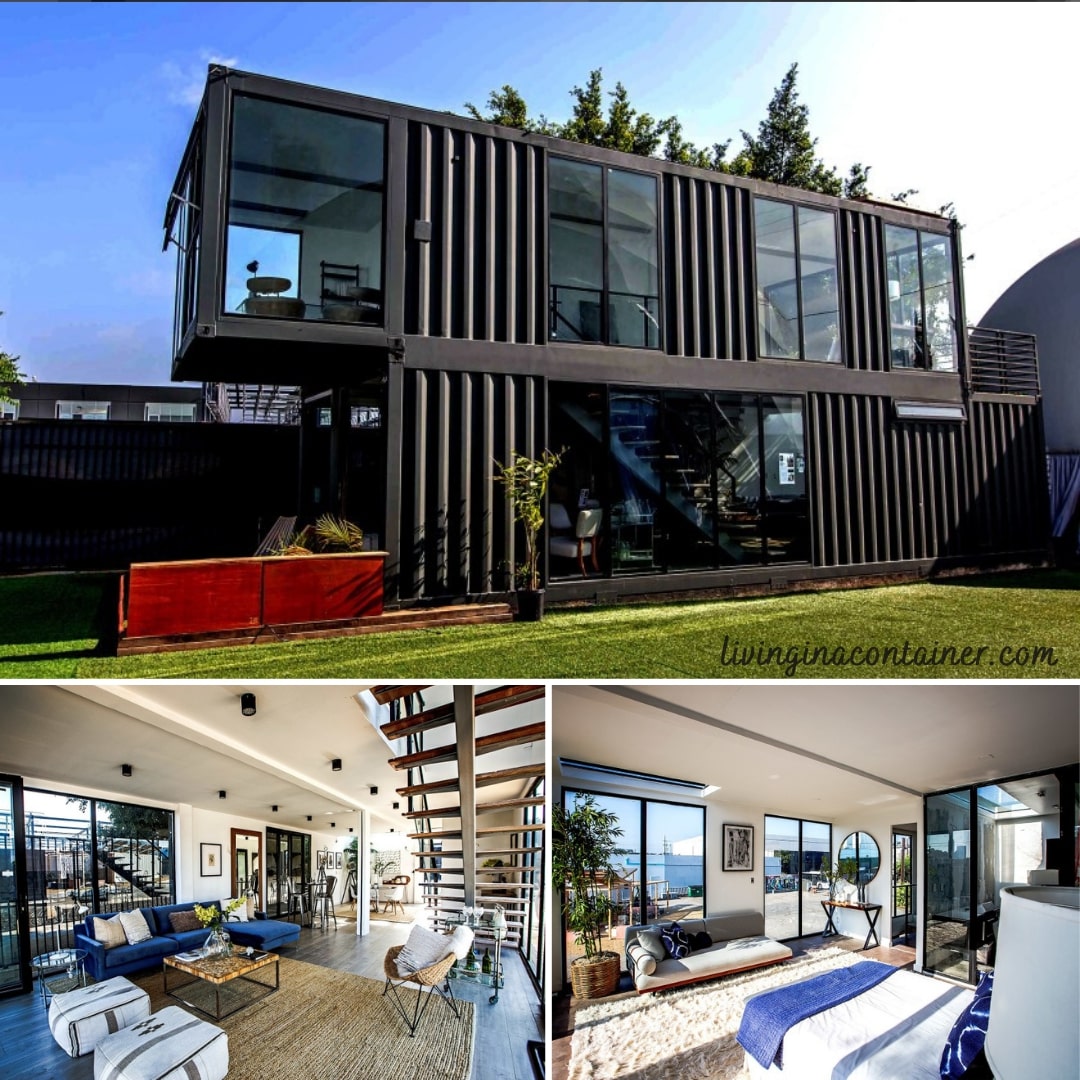
Real-Life Examples of Container Homes in LA
Case Study: A Container Home in Sunland-Tujunga
Perched on the outskirts of Los Angeles, in the neighborhood of Sunland-Tujunga, stands a testament to the unique and innovative potential of container homes.
This two-story abode, brilliantly put together by architect Peter Demaria, showcases an L-shaped design using repurposed shipping containers as the building structure.
Swayed by the cost-effectiveness and the capacity for swift construction of a container home, the homeowner had to navigate a rigorous site evaluation and design review process to eventually obtain the necessary permits from the LA County, underscoring the challenges unique to this type of housing.
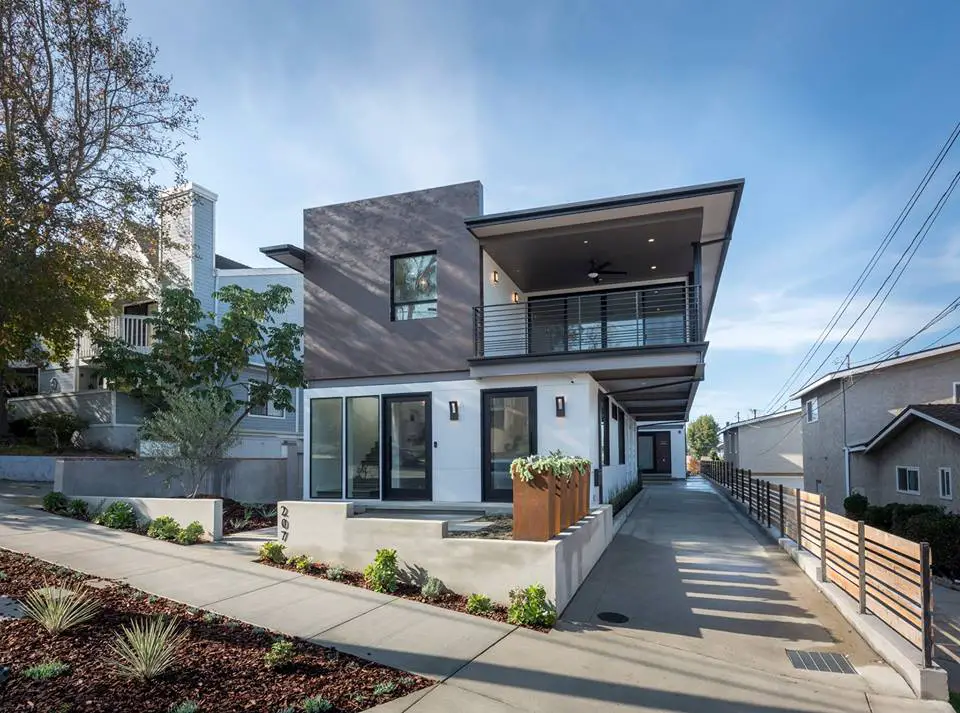
Example 2: Redondo Beach Container House
Moving closer to the coastline, there’s a residential project in Redondo Beach that is made up of multiple shipping containers. Known as a highly energy-efficient home, this residential project adheres to the Los Angeles Green Building Code’s requirements and includes solar panels, rainwater collection systems, and high-quality insulation.
Logistics played an integral role in the process, and according to the homeowner, navigating through local regulations, particularly regarding home site selection and height restrictions for container homes, was challenging.
Example 3: Hybrid Container Home in Echo Park
Heading east, Echo Park houses a unique hybrid container home. The property was designed and built by the eco-friendly architect Stephan Meier, who combined intermodal steel building units (ISBUs) with traditional building methods.
The legal process was somewhat complex, involving environmental impact reports, zoning restrictions, and building codes specific to the city of Los Angeles and the state of California.
Despite the challenges, Meier’s design strategy allowed for multiple textures, efficient use of space, and a swift build time.
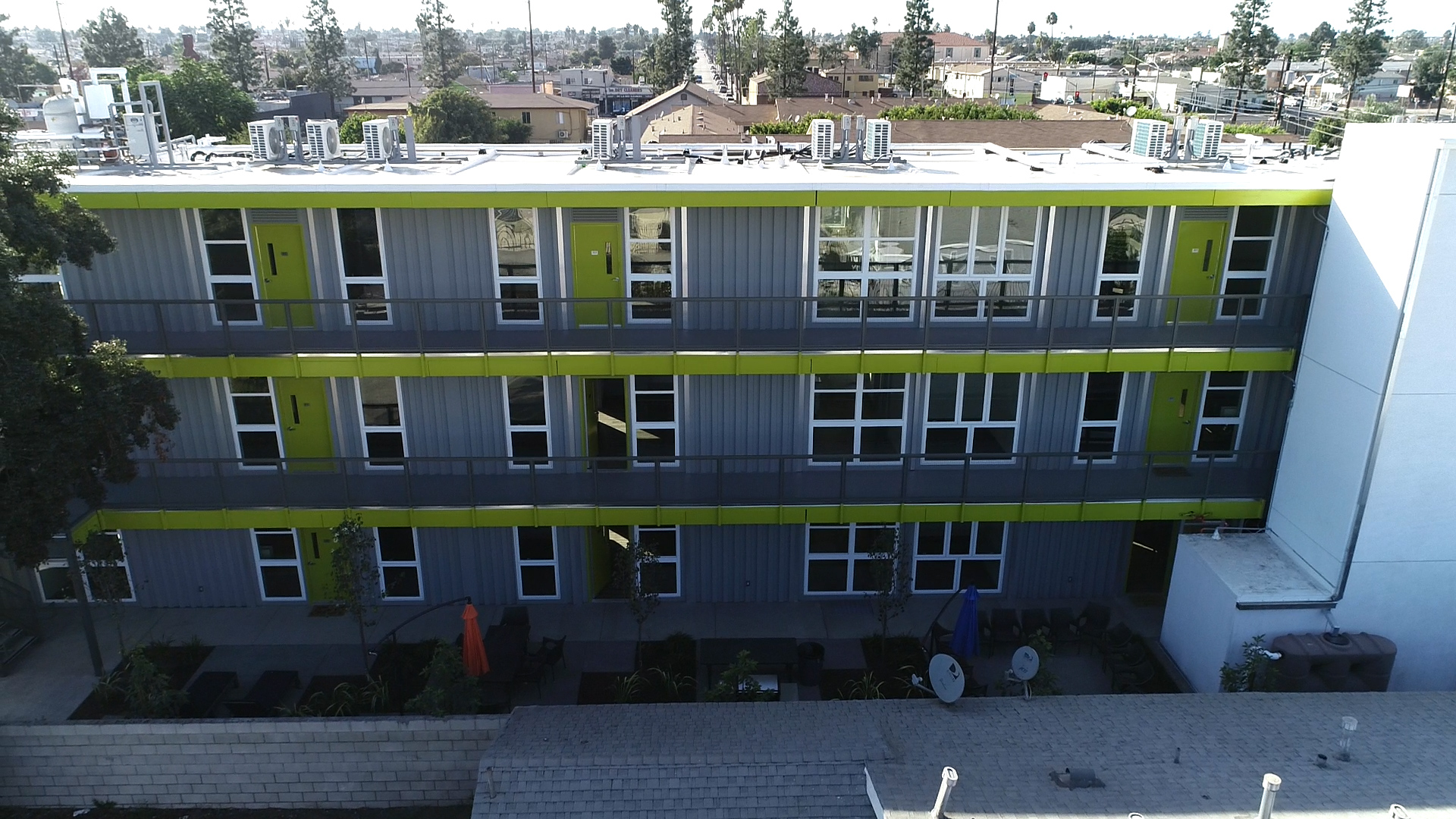
Example 4: South LA Affordable Housing Project
Marking a shift into the socio-economic domain, the South Los Angeles affordable housing project deserves mention. The three-story apartment complex, known as Isla Intersections, comprises 16 shipping containers.
It was developed by nonprofit organization FlyawayHomes in conjunction with the The People Concern. To ensure compliance with local laws and regulations, the developers had to navigate a complex patchwork of housing, land use, and zoning regulations.
However, the project was ultimately received as a practical and scalable solution to the city’s affordable housing crisis.
Managing Potential Challenges: Maintenance, Insulation, and Noise
Owners of container homes in Los Angeles frequently mention common challenges associated with living in such units.
These include the need for regular maintenance to prevent rust, the necessity to install a robust insulation system to cope with the California heat, and solutions for noise isolation given the thin walls of the shipping containers.
However, these challenges can be turned into opportunities; rust can be prevented with a rust-proof paint job, and installing high-quality insulation can both regulate the temperature and dampen noise.
Design Features and Creativity
From panoramic windows to roof-top gardens, container homes in LA come with a wide variety of unique design features.
The small footprints of shipping containers encourage homeowners and architects to think creatively when it comes to utilizing space, resulting in attractive and efficient designs.
These homes are a fitting reflection of the city they reside in – innovative, diverse, and offering a touch of eccentricity. These factors, alongside relatively low cost and environmental sustainability, make them a compelling choice for urban residents.
Therefore, making a home out of a shipping container in Los Angeles is no small venture.
The intricacies of construction, cost, and compliance married with the intricate dance of design and creativity makes it a balancing act of skill, ingenuity, and patience.
Yet, the possibility of carving out a compact, sustainable, and significantly less burdensome financial niche in a city that is fabled for its high real estate prices makes it an option worth considering.
Indeed, the container homes in LA illustrate that where there is a need paired with creativity, there lies the potential for a uniquely modern, sustainable solution to urban living.
